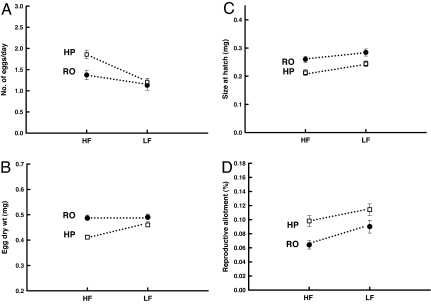Fig. 2.
Differences in fecundity (A), egg size (B), larval size at hatching (C), and reproductive allotment (D). □, high predation; ●, Rivulus only; HF, high food; LF, low food; HP, high predation; RO, Rivulus only. Error bars indicate ±1 SE. Significant predator and food effects (P < 0.05) were found for all traits, although the influence of food availability on egg size was marginally nonsignificant (0.05 < P < 0.1). Significant interactions between predator community and food level were observed for fecundity and egg size.

